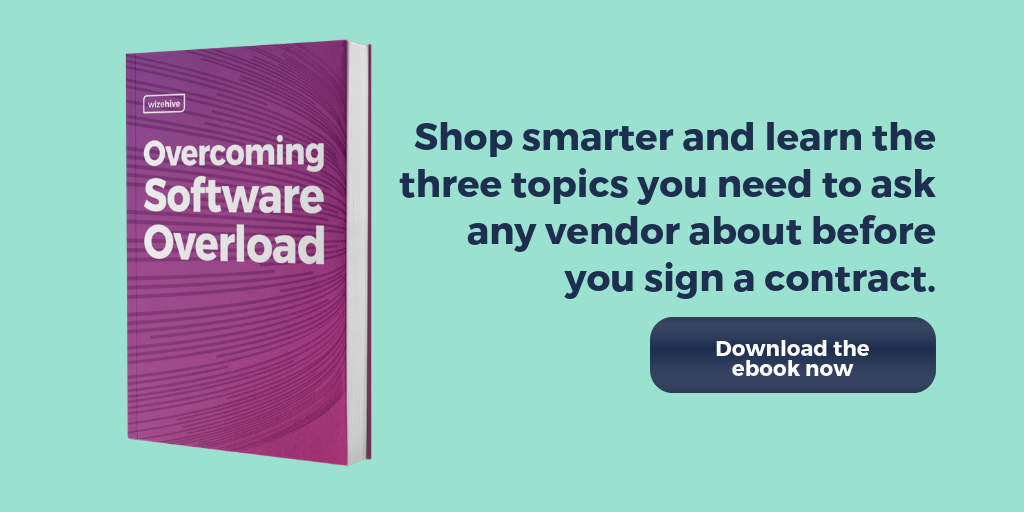It's hard to let go - especially when you've spent years customizing a grant management system to meet your organization's specific needs. But if any of these five signs sound familiar, it's time for an upgrade.
Moving on from an old IT system is one of the hardest decisions for an organization to make. And it’s easy to see why.
Despite its faults, your grant management software is familiar. You don’t want to disrupt your operations. Plus, you’ve probably already invested a lot into making it work for your organization -- be it adjusting the system or adjusting your internal process. And the cost to switch? That can be a scary prospect, especially if your budget is tight.
But if you’re experiencing one or more of the signs below, you’re probably not saving money by putting off the decision. Legacy systems often require a greater investment for routine maintenance, specialized staff to maintain a complex setup, and additional software to fill in the gap of missing features. Not to mention performance issues and downtime mean that your staff isn’t as productive. It all adds up.
Let’s take a look at the five signs, so you can decide whether your legacy grant management system is holding your organization back.
1. Security Concerns
Does your current software leave you vulnerable to cyberattacks? If so, this is a major red flag, regardless of whether an incident has occurred. Investing in new software is significantly less than recovering from a serious security breach.
According to Computer Weekly, “legacy IT systems are often at the heart of cyber breach incidents.” Older software systems may utilize outdated network security protocols, standards, and/or security controls.
Consolidating your data in a secure cloud environment using a Software as a Service (SaaS) provider is one way to reduce your risk. In most cases, this delivers an immediate improvement in security for nonprofits by providing a modern digital infrastructure.
2. Integration Issues
Does your software require duplicate data entry or time-consuming workarounds because it doesn’t integrate with other systems? Or is it too complicated or costly to develop the integrations? This is another sign to consider an upgrade.
Many older systems aren’t compatible because they’re based on obsolete technology. However, a modern system architecture is designed to more easily alter or customize certain elements while keeping the integrity of the system.
For example, Zengine, our grants management platform, is the one of the most flexible systems on the market. The underlying infrastructure was designed with change in mind. This makes it possible to customize to your specifications and integrate with almost anything in the cloud.
3. Slow Performance
Does your software load slowly, freeze up, or crash regularly? This usually means that patches, updates, and/or maintenance are either no longer available from the third-party vendor or your internal IT staff doesn’t have the bandwidth to maintain the system.
This happens a lot with nonprofit organizations. Our client, Texas Tech University historically relied on a grant management system built by an in-house programmer. However, when that person left, the maintenance of their tool began to fall apart. When they switched to our SaaS system, they no longer had to worry about who would maintain the software.
Slow software translates into an inefficient organization. If there’s no way to improve performance permanently, that’s a good reason to invest in a new grant management system.
4. Limited or No Support
How much time does your staff lose to figuring out problems on their own or waiting for the time-strapped IT professional in your organization?
If you’re using a third-party vendor, there might be a significant lag in the response time. Perhaps the company cut support for an older product to focus on a newer one.
If it’s an in-house system, you might have to wait for the right IT professional with specific training on the software. Or it might just be a matter of limited internal resources.
Whatever the case may be, it creates a slowdown in your process, which affects staff productivity, and ultimately, diminishes your capacity as an organization.
5. Increasing Cost to Maintain
Are you noticing that your IT budget keeps increasing each year, but you’re not benefitting from new features or more efficiency? This is a sneaky way that legacy software can hurt your organization.
If you have a homegrown software solution, it can be difficult to properly estimate the necessary costs. You have to consider infrastructure, monitoring, and technical support. There could also be one-time costs for new or replacement hardware. Or, expenses for unexpected disaster recovery.
When you have an older system from a vendor, it’s important to think about the hidden costs we talked about above - workarounds, slow performance, and lack of support. All these efficiencies can silently erode your budget.
--
Do you recognize any of these five signs in your organization? If so, it’s time to evaluate the short-term and long-term opportunity costs of not upgrading, so you can make a bigger impact.
